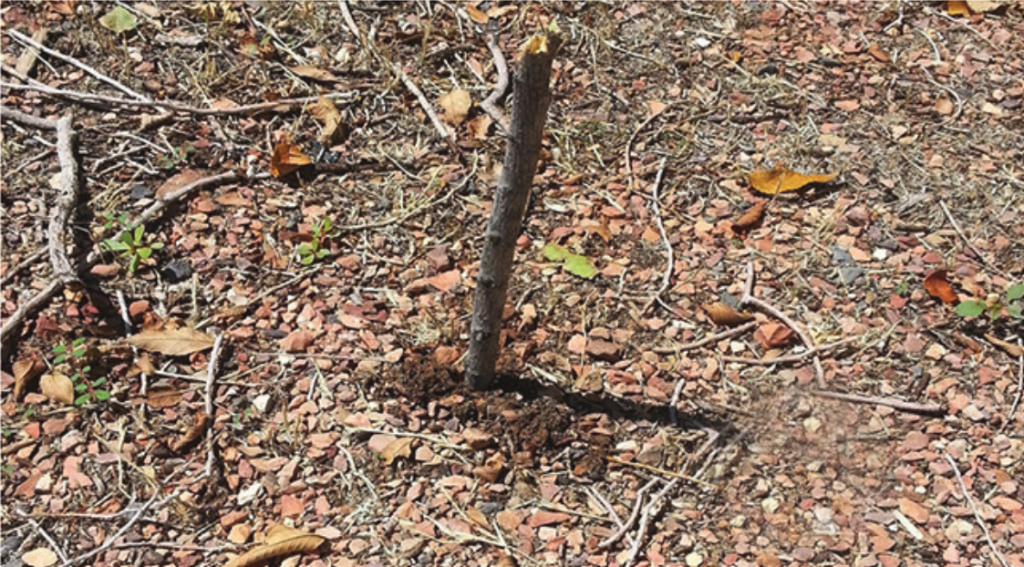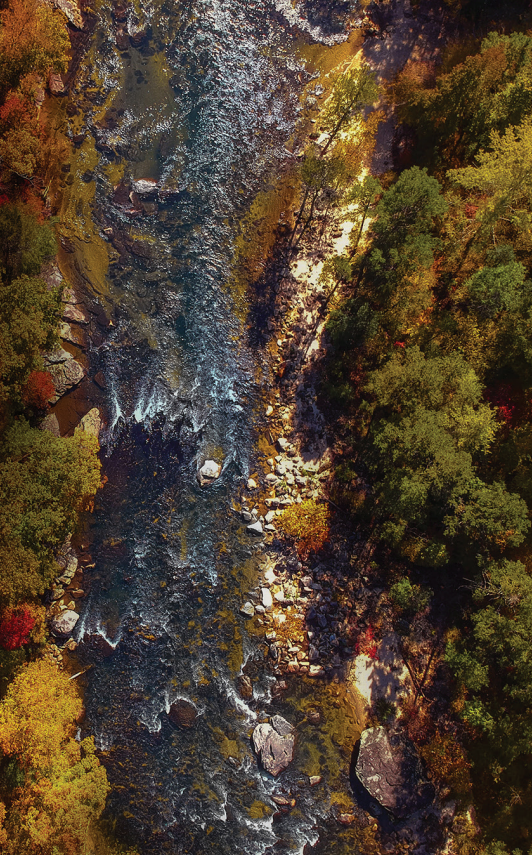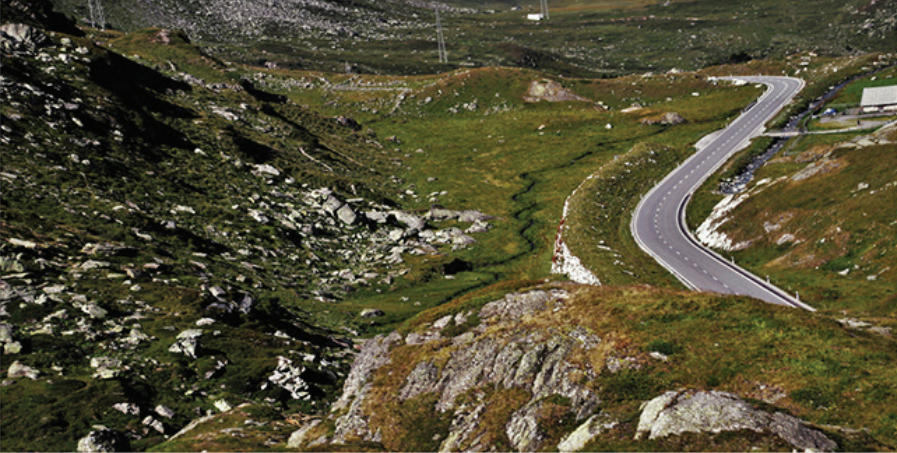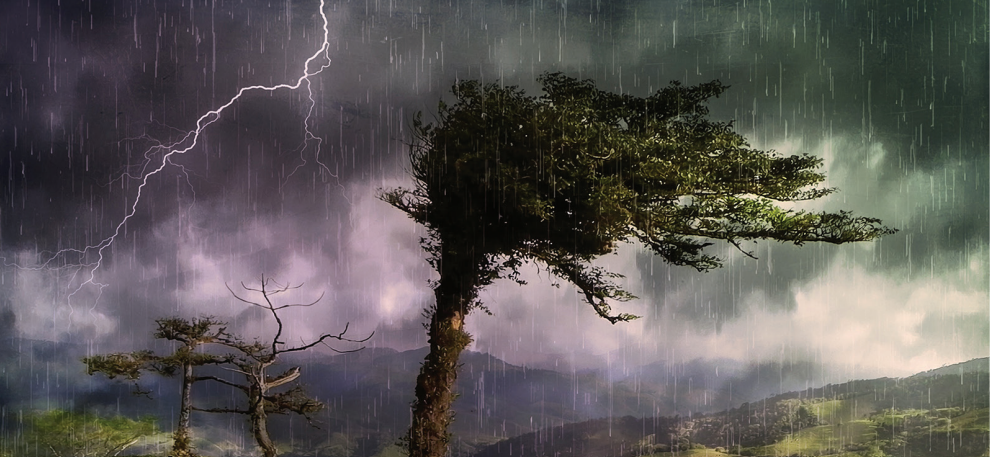The moss doesn’t always grow on the north side of the tree and geese don’t always fly on a north/south line – but there are plenty of ways that you can accurately navigate using the signs that nature provides. (But do bring a map and compass; it’s much easier to find your way with those!)
Start Simple
In the U.S., someone getting lost in a large park or wild area is the main reason that search and rescue crews are called out, and it’s a key reason that people find themselves in wilderness survival situations.
Most people have heard enough pop culture and movie references over their lifetime to know that the sun rises in an easterly position and sets in a westerly position. For once, pop culture is right. The moss on the tree isn’t accurate, but sunrise can show you roughly where “east” is located and sunset can show you “west” (the exact azimuth will vary by season and latitude).
If you can see either the sunrise or sunset, you can easily determine the other points (the cardinal directions). Imagine a clock face (analog, not digital). If east is 3 o’clock, then south is 6, west is 9 and north is 12. If you know which general direction you need to head, you can use the morning or late day sun as a temporary guide.
For example, if you need to head west – keep the rising sun at your back and walk away from it. Try to spot a distant landmark you can continue to use before you lose this bearing.
Depending on your latitude on the globe, as the morning turns into midday the sun will sweep through the sky in a southerly arc (in the northern hemisphere), a northerly arc (in the southern hemisphere), or overhead (along the equator).
Make a Sun Compass

Also known as “shadow sticks,” a sun compass can show the cardinal directions when used at midday. It’s easy to set up, too.
When you’ve lost your bearings but you know it’s almost midday, find a flat spot on the open ground with nothing nearby that will cast a shadow over the area for a few hours (this is tricky in a deep forest or jungle). This area should receive direct and uninterrupted sunlight.
Select a foot-long stick and drive it into the ground – about an hour or so before noon. Then stab a smaller stick into the ground or set a rock on the ground at the end of the shadow of the foot-long stick. Because the sun is still in a slightly eastern position before noon, the shadow is cast with a slightly western tilt.
Wait about two hours and place another object at the tip of the foot-long stick’s shadow (which has now moved quite a bit. The sun moves east to west about 15 degrees per hour.). This second marker will be your “east” marker.
Draw a line on the ground or lay down a straight stick and you’ll have an east/west line. When made in the Northern Hemisphere, the shadow stick itself will be in the south, the first marker you set will be west and the second marker you set will be east. From there, it’s easy to fill in the blank and determine north.
If you have a timepiece that’s dying (like the dwindling battery on your mobile phone), you can even add an arc of small stones or pegs in the ground to mark each hour of the day. Now you’ve created a sun dial to tell time after your phone battery croaks.
Tell Directions from One Stick!
 The simplest way to tell direction from a shadow involves just one stick and precise timing. If you could tell time and you knew that it was near the midpoint between sunrise and sunset (not necessarily 12 noon), you could stab a solitary stick in the ground and tell directions from that. In the Northern Hemisphere, the shadow from the stick will point north and the stick will be in the south. That’s all you need to get the other cardinal points.
The simplest way to tell direction from a shadow involves just one stick and precise timing. If you could tell time and you knew that it was near the midpoint between sunrise and sunset (not necessarily 12 noon), you could stab a solitary stick in the ground and tell directions from that. In the Northern Hemisphere, the shadow from the stick will point north and the stick will be in the south. That’s all you need to get the other cardinal points.
Follow the River
Because of our natural need for water, the water’s downhill course, and the fact that it’s usually easier to walk downhill than uphill – many lost hikers will be found along waterways and following them down to lower elevations.
This isn’t a bad strategy across much of the earth. Because of our need for water, and the way that water can act as a “highway” through the wild, many human settlements can be found along rivers in remote areas.
So before you head out into no-man’s-land, make a careful study of the waterways in the area with an accurate map and pay special attention to the river’s direction of travel. Since water is trying to get back to the ocean, the regional watershed may create several rivers that flow similar directions. Knowing that the local rivers flow east or south in a specific area can be a very valuable bit of information, and it can allow you to get your bearings – day or night.
Use Mountains and Valleys

Depending on the geology of any given area, the landscape itself may convey your directions. In my area, the mountains and valleys all run the same way – north by north-east to south by south-west. And the larger rivers in those valleys will run along that same line. By using ridges and valleys as landmarks, “highways” or “handrails,” you’ll rarely run off course in those regions.
Keep a Weather Eye

While the wind can blow from any direction at ground level, keeping an eye on the highest clouds can give you a handle on the prevailing winds and provide directions. In much of the Northern Hemisphere, the storms and winds tend to blow from west to east. Of course, the odd tropical storm, hurricane or “nor’easter” can change all of that, but your day-to-day thunderstorms and prevailing winds still come out of the west.
This can be so predictable in certain areas (especially if the wind is routinely strong), that windswept vegetation may grow leaning away from the wind. This can create a permanent indicator when you see trees, shrubs and other vegetation with their tops pointing east.
This article was originally published in Survival Dispatch Insider magazine Volume 2 Issue 11.
=====
Become a Survival Dispatch Insider …
We bring together survival enthusiasts and preppers to share skills and knowledge, so you can enhance your preparedness for emergencies and ensure the safety of you and your community.
The Results You’ll Get …
Our community, courses, and memberships are pretty special. We’re focused on the ways it will make a huge difference in your life.
Here are a few of the things you’ll be able to do as a member of Survival Dispatch Insider …
1) Improve your emergency preparedness by learning survival skills and strategies from experienced preppers.
2) Build lasting connections with like-minded individuals that share your passion for safety and readiness.
3) Access a wealth of knowledge and resources to assist in protecting you and your community during unexpected situations.
Click HERE to get started.
=====
